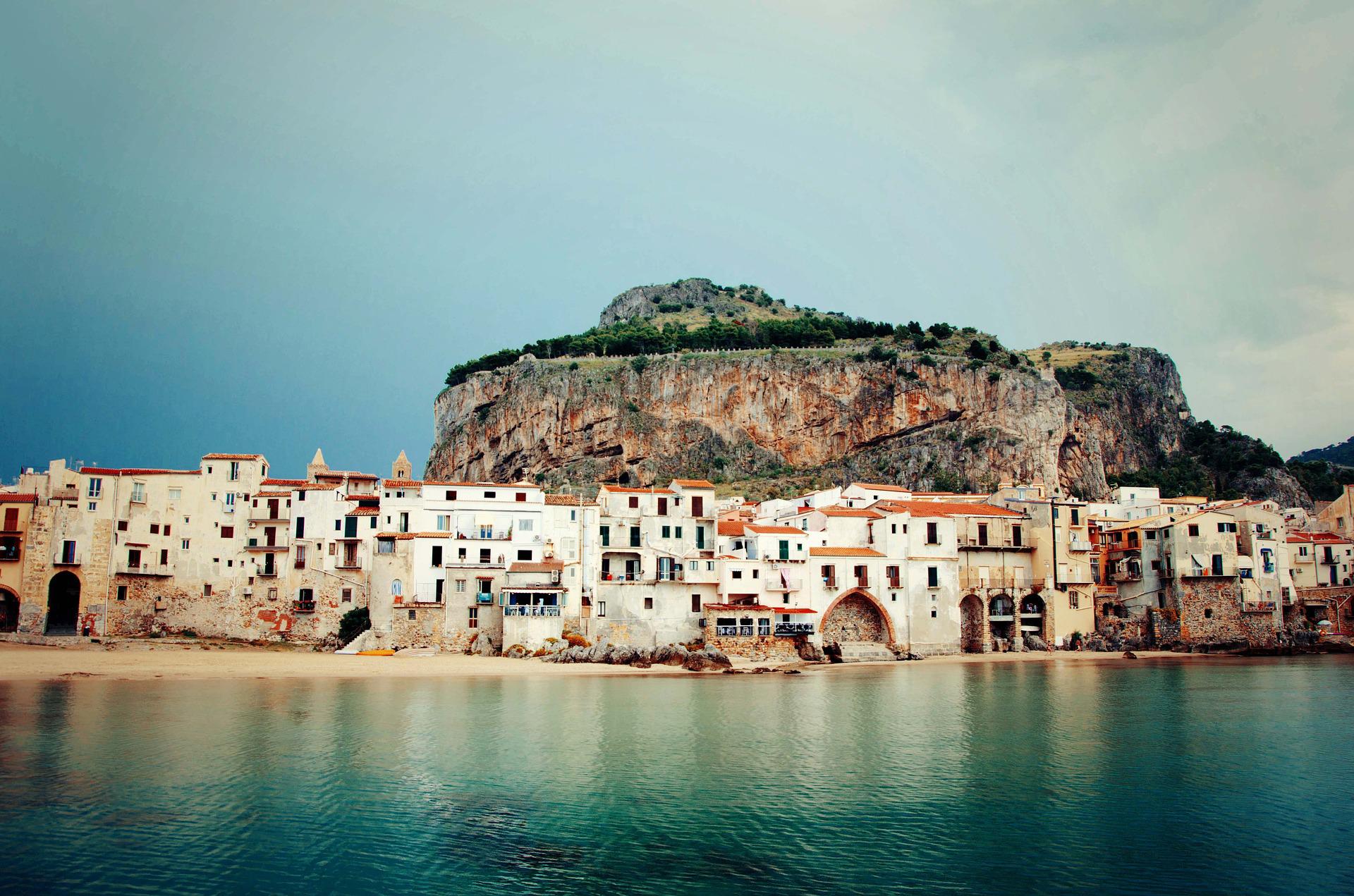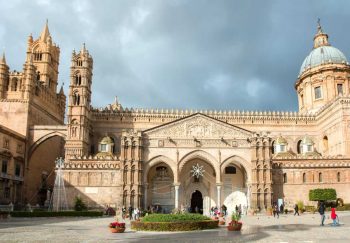Cefalu is one of Italy’s most picturesque villages and one of the most popular tourist destinations. It is located in the northern coast, approximately 70 km from Palermo.
Kephaloidion, Coephaledium, for Romans and Greeks, means head or also top, extreme. Gafludi is an Arabic word that refers to a fortified city with abundant water.
The city is dominated a massive rock rising up to 270m in height. This rock was previously known to the Phoenicians ” promontory of Hercules“, on which stands the Temple of Diana, a megalithic structure linked to water worship, as indicated by the nearby Cistern, dating back to the ninth century BC. The historic district lies in the shadow of the bastion and clings to its beating heart, which is undoubtedly, the Duomo. This gigantic cathedral was built by Roger II, an English Norman.
Legend has it that the cathedral was built in this town and not Palermo, which is the capital of the kingdom. This legend stems from Roger’s vow to the Holy Savior, after which he escaped a storm to land on the beaches of the village. Given the location of the city and the undisputed characteristics of a natural fortress, as well as the Basilica’s off-the-scale proportions, it is more likely that the motivations were political-military in nature. These are magnified by the remnants of the old city megalithic walls, which can be found along the Giudecca (Postierla), and at the Porta Terra (today Piazza Garibaldi).
This emblem of Norman power is found in craftsmen and architects who are truly inspired, even though it may seem odd. In fact, the outlinedesign is identical to other Palermo masterpieces and was inspired by the splendor of the Maghreb’s zirid-hammadid fortress-palaces. The building is simple, unifying in the block of two towers. However, it shines brightly due to the reflections of mosaics and the gold walls. The colonnade, which marks the rhythm of the space, leads us to the Christ Pantocrator, an impressive Byzantine mosaic with Latin and Greek inscriptions on a background of gold. Guglielmo di Pesaro is responsible for the wooden cross that hangs in the central apse. The cloister adjacent to the cathedral is also remarkable, with its columns and carved capitals as well as the Romanesque font.
You will find many other sights in medieval Cefalu.
The Palazzo Maria is located in Piazza Duomo. The Osterio Magno is located in Corso Ruggero. It was owned by Count Ventimiglia and features two stunning thirteenth-century two-light windows as well as one mullioned window from the fourteenth century.
The Medieval washing house was carved from the rock. It has been in use in recent times. We find ourselves on the other side of the lava rock-like curved steps.
This special setting is rich in history and culture. We are transported back to the past through the songs of the Sicilian laundresses who are busy with their daily routine.
A large arch with strong Arab influences covers the covered area. A single inscription on the right side of the entrance brings us back to an ancient legend. “Here runs Cefalino,”. “Cefalino is healthier than any other river, purer and colder than the snow. Legend has it that Cefalino was created from the unceasing sorrows of a Nymph who regretted being punished for her love’s betrayal.
Cefalu is a wonderful place to experience the splendor of Sicilian Medieval Life.
We move on to Cefalu’s baroque, where we see the façades of the Monte della Pieta (1716), and of the stunning Church of Purgatory (1668). There are also many portals, corbels, and other architectural details that decorate the streets and squares of this old town, which still retains its medieval layout.
It would be shameful to leave Cefalu without visiting the Mandralisca Museum, where you can enjoy the remarkable “Portrait of an Unknown”, by Antonello da Mesina, and wander into the rectangular crypts of Church of Purgatory, which house completely dried corpses.
After this fascinating immersion in art, culture, and food, all you have to do is find a spot by the sea and wait for the sunset.
The village’s most popular dish is ” pasta toianu“, which is pasta in the pot. It is layers of pasta with meat, fried eggplant, and pine nuts baked in large crocks.
Cefalu’s history is connected to food.
Some Cefalu dishes are inspired by its buildings, such as the carne Murata (walled beef) that recalls a Norman stronghold of layers of meat, onions, and potatoes with battlements made of fresh basil, oregano, and pepper.

